The Complete Guide to eCommerce Subscriptions
- The subscription based business model: What is it and is it right for you?
- Introduction: The rise of eCommerce subscriptions
- The eCommerce subscription model: Understanding its 3 types
- 5 Benefits of subscription services
- 9 Crucial subscription eCommerce platform capabilities
- Your guide to the essential subscription integrations and apps
- How to start a subscription business in 6 steps
- 5 Subscription model best practices
- Take the effort out of subscriptions with Ordergroove
9 Crucial subscription eCommerce platform capabilities
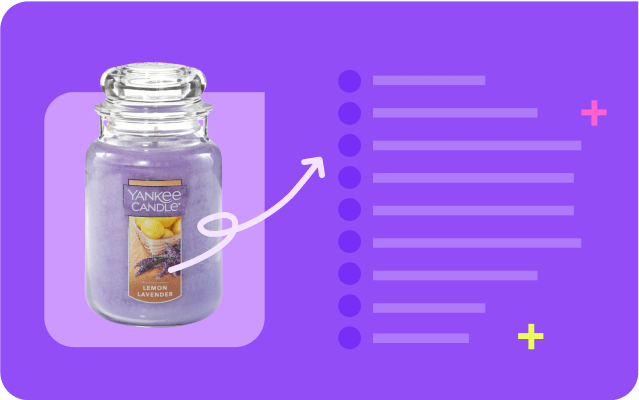
According to McKinsey, 32% of consumers sign up for subscriptions because of their convenience. But convenience means more than having a box of razors or coffee show up at the same time each month.
Convenience also means giving consumers control over their subscriptions. Ordergroove found that subscribers last 71% longer when they can swap a product and 135% longer when they can skip an order.
You don’t need to be Amazon to offer this level of convenience, but you do need to choose the right subscription eCommerce platform. The platform must contain the acquisition and retention features necessary to give subscribers the experience they want. It also needs to give online store owners the analytics to make good business decisions and improve workflows.
Some of the best eCommerce platforms lack all-in-one subscription management functionality. The good news is that many subscription platforms will integrate with them, in addition to your payment gateways, inventory management software, and marketing tools.
If your subscription eCommerce platform lacks the flexibility to adapt to the needs of your customers or business, you risk launching a subscription service that stalls before it starts. Here are some capabilities you should consider.
1. Subscription promotion configuration
The best subscription platforms should make a subscription’s value clear to the customer — and this value goes beyond recurring shipments. McKinsey found that 62% of consumers sign up because they see the subscription as providing “good value for price,” so it’s necessary to use promotions to aid conversion.
Yankee Candle doesn’t just make it easy for customers to turn a one-time purchase into a subscription. Their subscription platform also includes a discount for joining and the ability to set a shipping cadence while keeping the customer on the page.
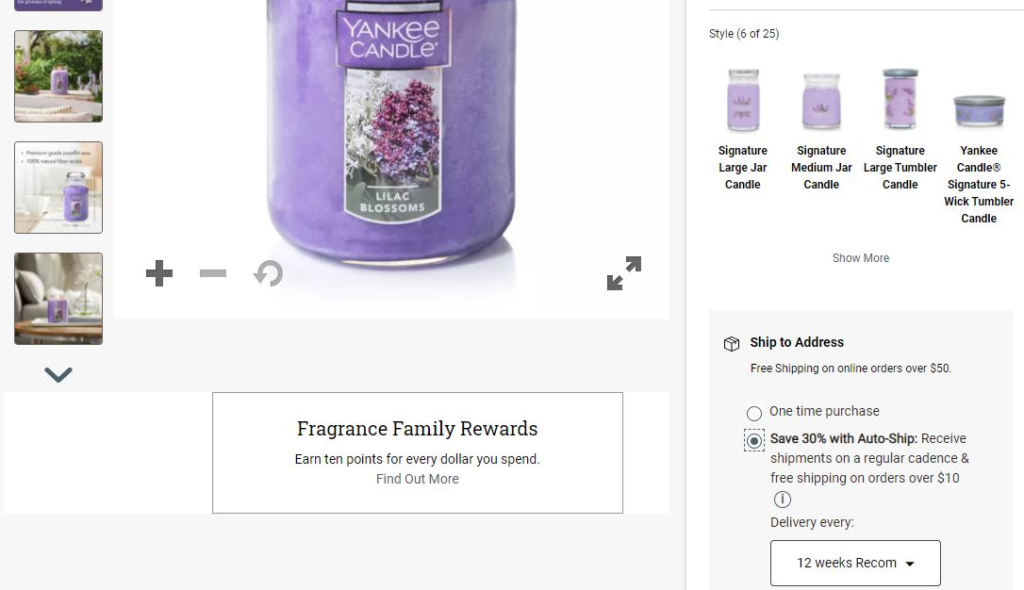
Our data shows that offering a 5% discount increases subscription enrollment by 104%. Steeper discounts lead to even higher enrollment rates.
Whether you use Shopify, Magento, or BigCommerce to power your eCommerce website, you must make sure your subscription platform integrates seamlessly. You don’t want to disrupt the customer experience.
2. Integrated checkout
Subscription promotions won’t matter if there is friction during checkout. Not all subscription eCommerce platforms offer an integrated checkout, so make sure to vet your options carefully.
An integrated checkout keeps customers on the same platform for the duration of their subscription sign-up. According to Casey Burt, strategic client director at Ordergroove, most aspiring subscription businesses overlook this feature to their peril.
A hijacked checkout forces customers to bounce from one platform to another to pay. While it’s important to give customers multiple payment options, this type of checkout creates a poor buying experience and a potentially failed acquisition. Ordergroove data shows that a hijacked checkout can reduce subscription enrollment by as much as 40%.
A hijacked checkout is almost more of a nightmare for merchants. It forces you to keep duplicate product catalogs and discount codes. It also creates a data nightmare, as you lose tracking information when the shopper leaves your site.
3. Retention rewards
Once you’ve acquired a subscriber, the work of retention begins. One of the best ways to keep subscribers enrolled is to reward them for sticking around through additional incentives.
The same McKinsey study finding that 62% of customers become subscribers because of “good value for price” also found that most subscribers remain engaged for the same reason.
Subscription platforms such as Ordergroove contain the option to reward a deeper discount to a subscriber after a set number of orders.
KIND Snacks also offers a point-based loyalty program, but they give subscribers the option of keeping it simple: For every fourth subscription box ordered, KIND will discount it 50%.
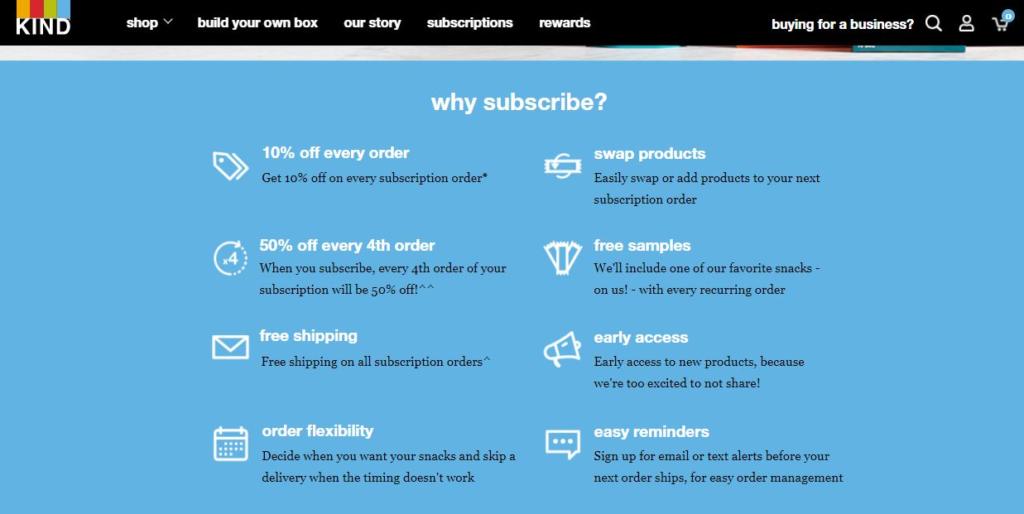
4. Auto renewals
One of the greatest benefits of a subscription business model is recurring payments. But without a subscription billing system to update expired credit cards, you’ll significantly decrease retention.
Many subscription platforms integrate with the various credit card companies through an API in order to update credit cards automatically. If this isn’t an option for your business, you can integrate your platform and CRM to send email notifications alerting customers about expired or soon-to-expire cards.
Merchants who work tirelessly to prevent voluntary churn often lose sight of the equally damaging involuntary churn that comes from expired cards.
According to FlexPay CEO Darryl Hicks, “Typically 48% of the churn is coming from failed payments. We see that a lot of merchants think churn is happening in customer service or [because] people are dissatisfied with the product or service. But if they’re not focused on the failed payments, they’re missing 48% of the problem.”
5. Churn anticipation
When subscribers churn voluntarily, they do so because they stop finding value in the subscription. This lack of value can stem from cost or from customers having an excess of product.
Some subscription eCommerce platforms use artificial intelligence (AI) to predict when subscribers will churn due to overstock. Merchants can then be proactive about preventing it. According to Kyle Beldoch, Ordergroove’s strategic client director, “this preemptive communication can reduce churn by as much as 17%.”
Say you’ve run a CBD subscription experience. Your subscription provider should have established churn benchmarks that become more personalized the longer you use the service.
Using AI, when an existing subscriber nears a churn threshold, your subscription eCommerce platform can send an email or SMS alerting them that they can skip a shipment if necessary. Many subscribers forget they have the option of skipping a shipment, which is why AI-powered churn anticipation can be so powerful.
6. Omnichannel capabilities
The definition of “omnichannel subscriptions” has expanded. It originally referred to the ability to enroll in subscriptions online and at physical retailers. Now, many subscribers want the flexibility of buying online and picking up in store (BOPIS). Your subscription eCommerce platform should make this process easy for both customers and employees to manage.
According to a 2020 report by McKinsey, 60% of consumers who tried BOPIS during the pandemic intend to continue that behavior post-pandemic.
BOPIS can be a serious driver of growth. When customers head to the store to pick up their order, they may browse other products — the perfect opportunity for increased upsells. But you have to prepare for this growth.
- You may need to hire additional brick-and-mortar staff to pull the merchandise and store the orders before pickup.
- Your subscription eCommerce platform must give you real-time inventory updates so you can monitor stock at the warehouse and in-store.
- The platform must allow in-store staff to indicate when orders have been picked up to keep inventory readings current.
- You may need to send emails or SMS reminding subscribers to pick up their orders.
Real-time inventory isn’t the only metric you need for omnichannel to work. You also need inventory forecasting.
7. Inventory forecasting
If your subscription eCommerce platform lacks inventory forecasting, you risk customer disappointment and increased overhead. Subscribers anticipating a curated subscription box will feel let down if desired items are out of stock. But you also don’t want to over-plan and have excess inventory you have to pay to store.
Your subscription platform should be able to generate a customizable dashboard where you can forecast by time period. It needs to answer specific questions about your inventory movements:
- Are there times of the year when you see subscriptions spike, requiring more inventory? For example, if your subscription boxes are popular holiday gifts, you will need more stock in January for first shipments.
- How much inventory can you stock in your warehouse? Don’t order more than you can store.
- At what point is reordering a product absolutely necessary? If it takes ten days to receive new inventory from a supplier and five days for the warehouse to stock it, you must have enough stock on hand to cover shipments over those fifteen days.
For subscription platforms that lack inventory forecasting capabilities, many can integrate with third-party solutions like ShipBob.
8. Product control
Subscription eCommerce platforms should also make it as easy as possible for customers to control the physical products in curated shipments.
Curation subscriptions vary the items in each shipment. Merchants either assemble the boxes themselves based on customer preferences or let subscribers customize them.
KIND Snacks’ subscription platform gives customers three options:
- KIND curates the entire box.
- KIND curates the entire box, and subscribers can swap items they don’t want.
- Subscribers curate the entire box.
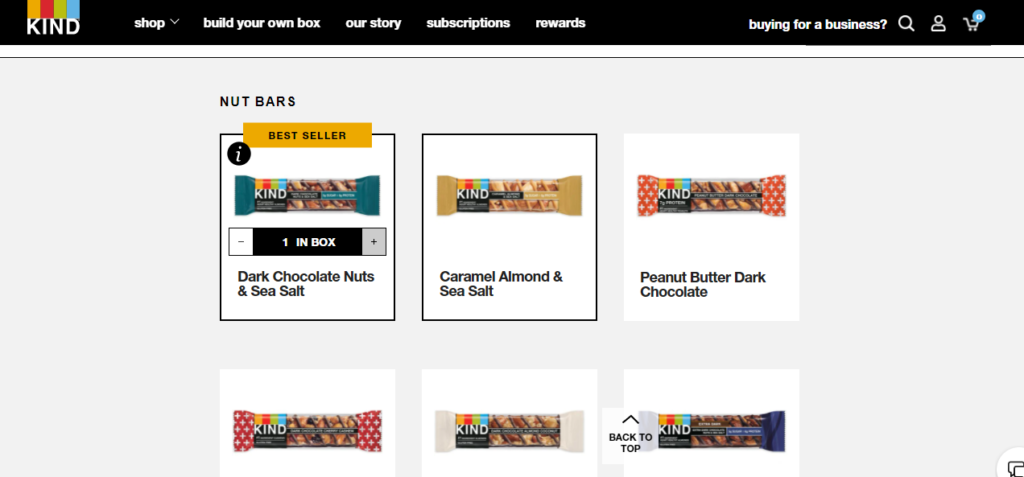
Some subscribers like the element of surprise, meaning that they look forward to seeing what a company such as KIND puts together for them each month. Others will want complete control. A subscription platform that allows both scenarios will help you acquire a more diverse group of customers.
9. Robust subscription analytics
A subscription eCommerce platform should make it easy to track the success of your subscription business. The platform should calculate key metrics automatically and present them in an easy-to-read, customizable dashboard.
The dashboard should compute the following six metrics automatically, freeing you to make strategic decisions more quickly.
1. Subscribers and subscriptions. The key to the health of any subscription business is to see a month-over-month increase in the number of subscribers and subscriptions sold.
2. Subscriptions per subscriber. You also need to know how your subscriptions are spread across your subscribers. If a high number of subscribers carry multiple subscriptions, you want to market to these customers differently in order to retain them.
3. Churn rate. Churn rate is the percentage of subscribers who discontinue their subscription in a given time period. If your churn rate regularly exceeds your subscription growth rate, your business is in danger.
4. Average order value. Another benefit of the subscription model is that it can increase average order values. If your average monthly one-off order is $50, yet subscribers pay $100 per month for their boxes, the value is clear.
Businesses that excel at cross-selling or upselling to subscribers can increase their average order values even more. Take seafood subscription service Wild Alaskan.
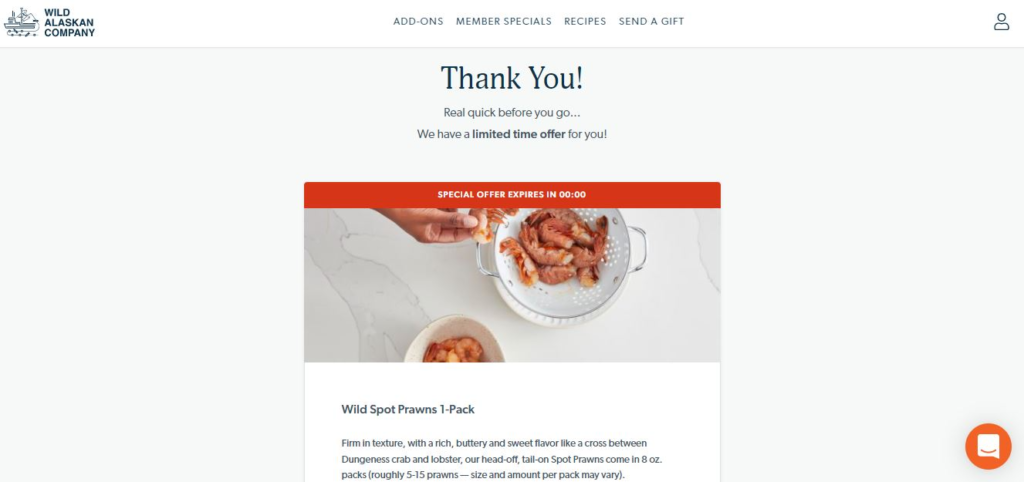
When they remind customers that a subscription box is about to ship, they include add-on opportunities.
5. Monthly recurring revenue (MRR). Monthly recurring revenue is the main benefit of a subscription model, so it’s important to have a laser-like focus on improving it.
MRR is a critical metric for budgeting and forecasting revenue, and it’s also a key barometer of the health of your subscription business.
6. Gross merchandise volume (GMV). GMV is not necessarily the same as MRR. GMV measures the dollar value of the merchandise you sell. If it increases month over month, it’s a sign of business growth.
But it doesn’t tell you how much money you’re making from that merchandise. You may have to subtract transaction fees, for example. That’s why you need both MRR and GMV.
Choose your subscription eCommerce platform carefully
The subscription space is becoming increasingly competitive, which means the cost to acquire and retain a customer is rising. Your subscription eCommerce platform can be the tool that sets you apart. The perfect subscription product won’t matter if you can’t give subscribers the experiences they want.
To learn more about specific integrations for your subscription technology stack, click here to read, Your Guide to the Essential Subscription Integrations and Apps.